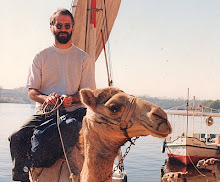




My great grandfather George Hill was a cabinet maker and by all accounts a very fine furniture maker at that. He made furniture for the Duke of Bedford as well as run his house as a small shop, coal merchants, coffin makers, cabinet makers and restorer. He did, however, have the failing of drinking in excess of moderation and at times being known to have thrown the family out of the house into the street, due to his drinking, also to be the owner of a fine early camera he often pawned the lens in order to meet the cost of beer for the weekend. I never met him, my eldest brother, 12 years older and wiser too boot, had the good fortune of knowing him and seeing his house and workshop, I am left to relate stories that were told to me and I am without proof of their honesty. Still for me he was obviously a man with passion and the small pieces of wood carving, I remember seeing as a child, that exsist show him to have been very skilled. Grandfather, Lewis Hill, worked for his father from early teens to the point of being married to Florence Patterson, although he had an apprenticeship with another cabinet maker before hand, clearly George Hill did not think it appropriate to teach his own son but wait for him to be useful in the workshop. The problem with family firms can be that everyone is expected to work for nothing and subsidise the business with long hours of unpaid work, this was the case with my grandfather and it led to Florence asking Lewis to stop working for his father and get another job that had a pay packet at the end of the week.
My grandfather told of work that was hard, dusty and repetative, often using the old belt driven lathes and saws, not stopping to change speeds or drives but moving the wizzing belts with a piece of wood. Those times the whole workshop would rely on one traction steam engine that drove several rods across the workshop above the workers heads, to these where added pulley wheels and these drove canvas belts that went onto the pulleys attached to the various machines on the ground. The noise must of been deafening and the belts would have constanly blown the saw dust around the workers. It was before Henry Ford but with the same intention of mass producing articles, the turnings for chairs and tables would be slung into large boxs and then taken to the assemble rooms for fabrication. I will go through as many subjects as I can remember and not always in any order for this is more of a magazine than a guide book. If you have any wishes for a posting please contact me and I will research the subject and write on it. So here goes designs on wood.



Nenhum comentário:
Postar um comentário